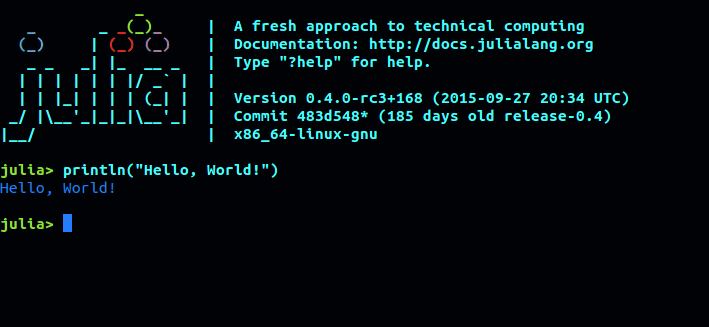MIT has developed a programming language Julia 1.0 which has been officially released for public. Julia was under development for more than 10 years and made its official public debut during JuliaCon. It is an annual conference of Julia users. Julia 1.0 is a free and open source programming language which is available all over the world for the programmers to use. MIT Professor Alan Edelman said, “Julia has been revolutionizing scientific and technical computing since 2009.” The program combines the best of Ruby, MatLab, C, Python, R, and several other languages to form one language which is being adopted by developers who are working on the latest technology.

Julia was made available for developers in 2012 and has been used by the MIT Lincoln Laboratory and the Federal Aviation Administration to develop the Next-Generation Airborne Collision Avoidance System (ACAS-X). The MIT Robot Locomotive Group has used Julia language for robot navigation and movement. There are more than 700 active open source contributors, 1900 registered packages, 41000 GitHub stars, 2 million downloads, and a 101% annual rate of download growth. The language is used by 700 universities and research institutions. Companies like Aviva, BlackRock, Capital One, and Netflix are also among those who are using the latest programming language.
The developers of Julia say that they created the language only because they are ‘greedy’ and wanted to get the best of all languages rolled into a single one. In a blog post, published in 2012, they stated, “We want a language that’s open source, with a liberal license. We want the speed of C with the dynamism of Ruby. We want a language that’s homoiconic, with true macros like Lisp, but with obvious, familiar mathematical notation like Matlab. We want something as usable for general programming as Python, as easy for statistics as R, as natural for string processing as Perl, as powerful for linear algebra as Matlab, as good at gluing programs together as the shell. Something that is dirt simple to learn yet keeps the most serious hackers happy. We want it interactive, and we want it compiled.”

At the moment, Julia is the only high-level dynamic programming language in the ‘petaflop club.’ This implies that the language has achieved 1.5 petaflops/s using 1.3 million threads, 650,000 crores and 9300 Knights Landing (KNL) nodes to categorize 188 million stars, galaxies and other astronomical objects in 14.6 minutes using the world’s sixth-most powerful supercomputer. The language is also getting popular with engineers who are working with self-driving cars and 3D printing technologies. Edelman said, “The release of Julia 1.0 signals that Julia is now ready to change the technical world by combining the high-level productivity and ease of use of Python and R with the lightning-fast speed of C++.”



This thing is 1 and a half year old, you should write about something new.